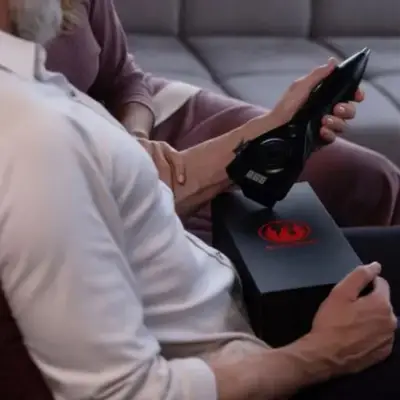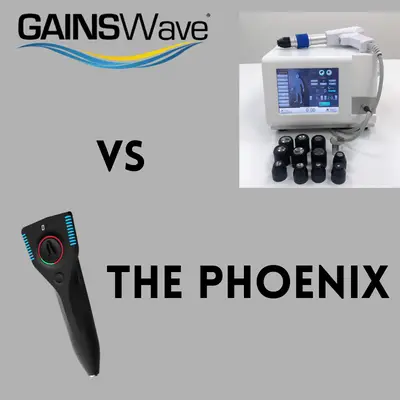TENS units are commonly used to treat pain. However, there are many other methods of treating pain, and people often wonder whether they can use them with TENS. One example commonly asked about is using ice with a TENS unit.
So, can you use ice with a TENS unit? No, you should not use ice or cold packs at the same time with a TENS unit. The function of the electrodes could be affected by them, and you could become more sensitive and potentially harm yourself. Water should also not come in contact with the electrodes in any shape or form.
While using TENS with ice is not recommended, you can still use them in combination as long as they’re applied at different times. To learn more about using TENS with ice, how to properly use hot or cold packs, and much more, read on.
When to Use Ice?
In general, neither hot or cold therapy is recommended for people whose health conditions don’t allow for temperature extremes. These conditions include high sensitivity, problems with circulation, diabetes, etc. So, before applying either TENS or hot or cold packs, you should consult with your doctor.
If you do not have any of these conditions, you can freely use ice therapy.
Cold therapy — often known as cryotherapy, ice therapy, or cold pack therapy — is commonly used immediately after an injury, for example, for bumps, bruises, sprains, etc. You probably know of the term RICE, standing for rest, ice, compression, elevation, which is often given to athletes after an injury.
This form of therapy helps mitigate the initial damage, especially swelling. So, it’s normally used within 72 hours of an acute injury. However, it’s also used for chronic pain in some cases.
Aside from preventing swelling, it can stop the bleeding, make the area of injury less inflamed and painful. It works by causing the involuntary contraction of the muscles, which is why it can be used after exercise.
Ice packs shouldn’t be applied directly to the skin as they could cause more harm to the injured area, so you should have some sort of a barrier between the ice and the skin.
At the same time, hot packs or hot therapy that utilizes moist heat is also used to treat pain, but in different ways. You might also want to use it with TENS, but you shouldn’t. However, you can use it in combination (at different intervals) if your medical professional thinks that it would help you.
Unlike cold therapy, which is commonly used to reduce swelling immediately after an injury, hot, moist therapy is used to help the healing process once the swelling reduces. Keep in mind that this form of therapy is not the same as infrared heat, which is sometimes used in hospital settings, as that heat deters the healing process.
One of the reasons why you might opt to use moist heat therapy is to stop the pain and increase your range of motion. It’s commonly used before exercising as it boosts the blood flow and elasticity of the body, making injuries less likely.
Similarly, a heating pad can boost the blood flow in the area of healing and make it less painful and more elastic. For example, if you sprained your ankle, a heating pad will enable you to move it in a wider range than immediately after the injury.
So, after an injury occurs, you would use a cold pack to reduce the inflammation in the area, and then once that’s done, you can use moist heat therapy to further improve healing.
For chronic patients, on the other hand, the best form of therapy is the one that suits their pain. It’s often different from one person to another, so if you suffer from chronic pain, you can use either moist heat or ice, depending on what works for you. You can also use them in combination during the day.
While neither should be used with TENS directly, you can combine these three forms of therapy in a way that will boost your healing and relieve pain.
How to Combine TENS and Ice Properly?
Ice packs can reduce the temperature within the muscles and thus reduce the inflammation and pain within the injured area. It has an analgesic effect since it reduces the velocity of the nerve conduction and the activity of the muscle spindle.
Ice is generally most effective immediately after an injury happens, although you could use it after too if it feels comfortable for you. But you’ll get most of its benefits within 72 hours.
You should apply ice over your injury for about 20 minutes at most and do this for 3 or 4 times a day. After that, you can use it for the same amount of time, but only when you need it.
Keep in mind that you could cause nerve damage or frostbite if you don’t do it properly or use it for too long, so it’s best to follow the rules prescribed by a medical professional.
Combining TENS and ice packs is possible, although you can’t use them at the same time. As mentioned above, ice packs should be applied immediately after an injury to reduce pain, swelling, and inflammation. After those have subsided, you can use a TENS unit for about 20 minutes. Use these two therapies interchangeably.
Want to know where a TENS unit electrode pad can be placed? Check out my TENS placement guide here
Because you can’t use ice all day without harming yourself, and if the pain is still significant, you can use TENS in between ice packs. However, make sure that the area is dry and not bleeding. A TENS unit can help further reduce swelling and inflammation.
You’ll feel less pain while using TENS, which might help you relax even more and rest your injuries.
At the same time, you can also count on moist heat to help you in combination with TENS. Moist heat therapy is especially good with TENS, as it decreases the tension in the tissues, boosting the elasticity of the tissue and reducing pain. Moist heat has numerous benefits, and in conjunction with TENS, it will allow your body to activate its own pain relief system.
Moist heat works well with TENS because the warmth can help boost the conduction of electricity, making it penetrate deeper into the muscles and making the injury heal faster while relieving the pain.
Moist heat can also make the sensation coming from the TENS more comfortable and enjoyable for you. Pain relief from TENS might also last longer if you use it in combination with moist heat therapy.
If you want to combine them properly, a good way to do it is to apply moist heat to the affected area before using TENS. Make sure that the skin is dry and that you have applied the gel before using the TENS.
This can work both for acute and chronic pain. But, as mentioned, chronic pain patients should use the form of temperature therapy that works best for them in the given moment.
Conclusion
As this article shows, you shouldn’t use ice or heat therapy with TENS at the same time. However, you can use them in combination, especially after an acute injury.
For example, you can apply ice packs immediately after an injury, then use TENS. Then, after the swelling is gone, combine TENS and moist heat therapy. This way, you’ll achieve optimal results and get the most benefits from each form of therapy.
Remember to consult your chosen medical professional on this subject, and they’ll be able to give you even more advice related to the usage of TENS, as well as provide a personalized plan of use.
Sources
- Southern California Orthopedic Institute: Should You Ice or Heat an injury?
- NCBI: Does transcutaneous electrical nerve stimulation (TENS) simultaneously combined with local heat and cold applications enhance pain relief compared with TENS alone in patients with knee osteoarthritis?
- NCBI: Acute effects of cold therapy on knee skin surface temperature: gel pack versus ice bag
- NCBI: Comparing the anti-swelling and analgesic effects of three different ice pack therapy durations: a randomized controlled trial on cases with soft tissue injuries.
- NCBI: The Efficacy of Thermotherapy and Cryotherapy on Pain Relief in Patients with Acute Low Back Pain, A Clinical Trial Study
- NCBI: Efficacy of moist heat pack application over static stretching on hamstring flexibility.
- NCBI: Effect of heat and cold on tendon flexibility and force to flex the human knee
- NCBI: Moist Heat or Dry Heat for Delayed Onset Muscle Soreness
- NCBI: The use of ice in the treatment of acute soft-tissue injury: a systematic review of randomized controlled trials
- NCBI: What Is the Evidence for Rest, Ice, Compression, and Elevation Therapy in the Treatment of Ankle Sprains in Adults?
- NCBI: Effects of Topical Icing on Inflammation, Angiogenesis, Revascularization, and Myofiber Regeneration in Skeletal Muscle Following Contusion Injury





4 responses to “Can You Use Ice With a TENS Unit?”
[…] long you should use a TENS unit will depend on what kind of pain you need to use it for. You should speak to your doctor to […]
[…] can you overuse a TENS unit? You can’t get addicted to TENS as you can with other pain relief methods. However, with […]
[…] reduce pain. There are many benefits to using a Tens unit for phantom limb pain. First, using a Tens unit can help improve your overall quality of life. Second, using a Tens unit can help reduce the […]
[…] and more studies are needed, most evidence states that ultrasound doesn’t help with pain relief. TENS has more scientific support, and several studies have found that it does help patients in pain. So, […]